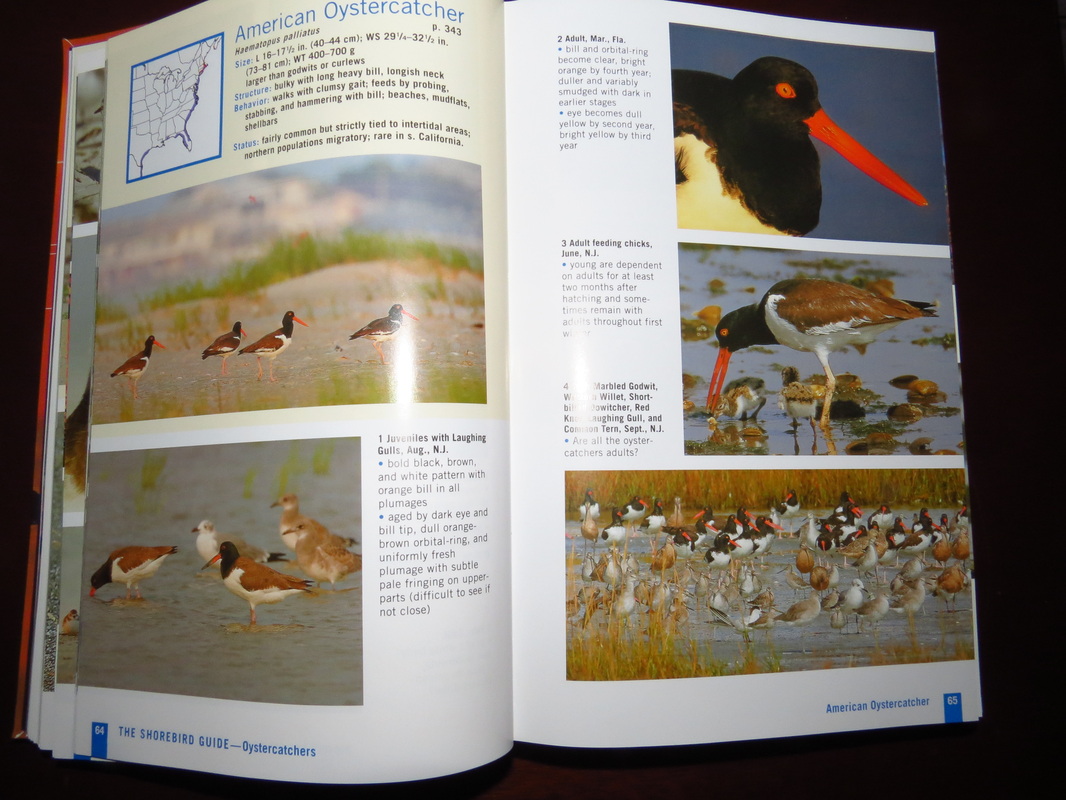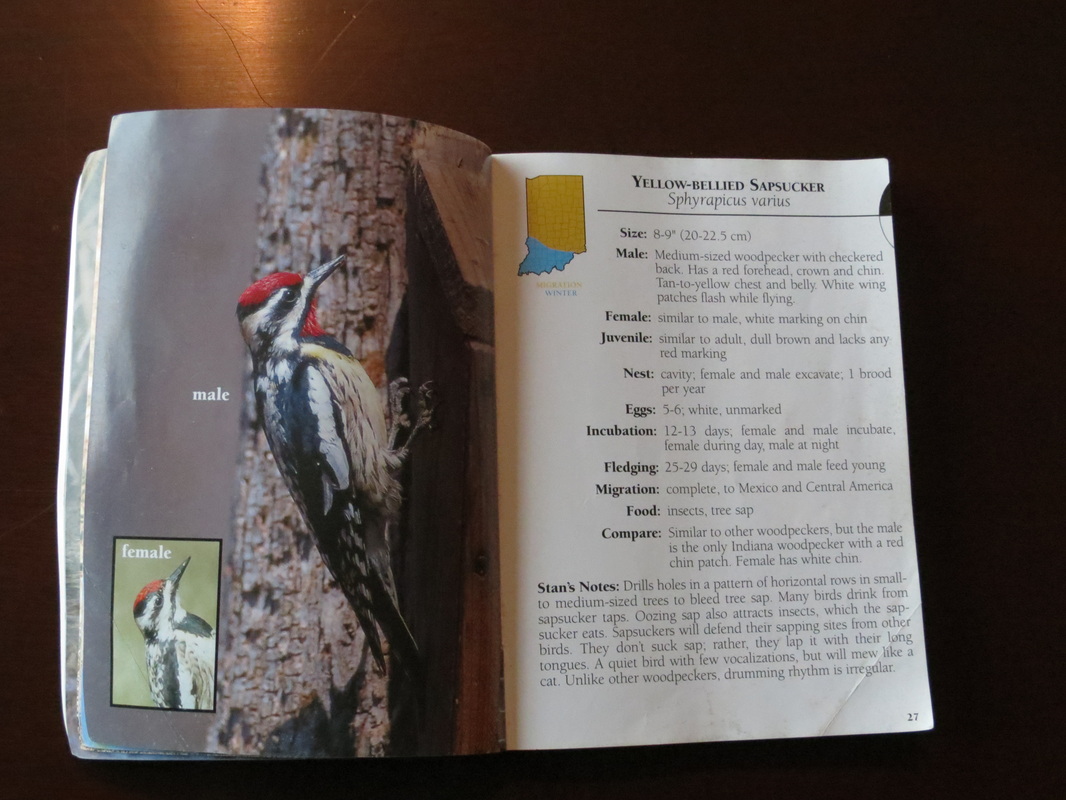Book Reviews
Guide books. Reviews of these field guides will be posted regularly below. Check back frequently!
Attracting Birds by the Editors of Sunset Books and Sunset Magazine
The Crossley ID Guide: Raptors by Richard Crossley
Field Guide to Birds Eastern Region by The National Audubon Society
Field Guide to the Birds of North America by National Geographic
Field guide to the birds of North America by Smithsonian
Attracting Birds by the Editors of Sunset Books and Sunset Magazine
The Crossley ID Guide: Raptors by Richard Crossley
Field Guide to Birds Eastern Region by The National Audubon Society
Field Guide to the Birds of North America by National Geographic
Field guide to the birds of North America by Smithsonian
The Crossley ID Guide: Eastern Birds by Richard Crossley
|
The Crossley ID guides are rapidly gaining in popularity and it's easy to see why. The spectacular photography really sets this field guide apart from the others.
To reliably identify a bird, regardless of lighting, distance or other conditions, you have to truly know the bird. To do that, you have to study the bird's patterns, shape and movement; understand its behavior and habitat; and know what the bird looks like from different angles, in different seasons and at different ages. This book is perfectly suited to help you do just that. In most cases, a full page is dedicated to each bird, with a multitude of photos from every angle, distance and position. The photos are collected in a sort of collage with the bird's typical habitat used as the setting. Photos include juveniles and adults, males and females, adults in breeding and non-breeding plumage, and birds at rest and in flight. The only downside to this book is that it might be too heavy for some to carry in the field. However, if you really study this book in the way it was intended, you won't need to carry it in your arms; you'll carry the images and information in your mind for fast, reliable identification on-the-go. |
The Sibley Guide to Birds, Second Edition by David Allen Sibley
|
The Sibley Guide to Birds, Second Edition, like the First Edition, will no doubt be found on every birder’s must-have list. With about 7,000 illustrations of over 900 species, and 85 bird family pages, this book is certain to help you identify any bird you find in the continental United States and Canada.
Some other reviewers have mentioned the font color and size, however I have no trouble reading the text. In fact, the gray text helps to focus attention to the illustrations such as the Northern Saw-whet Owl, which is the best professional drawing of a Saw-whet that I have ever seen. In addition, this book includes similar species on the same page or on the closest page possible so that you can compare the birds to each other and determine which you bird you saw. The book is also laid out so that the text is broken into smaller, more manageable sections while maintaining the same amount or more information than the First Edition. The Sibley Guide to Birds, Second Edition is a thorough field guide that will help you identify any bird, from the Calliope Hummingbird to the California Condor. |
The Shorebird Guide by Michael O’Brien, Richard Crossley and Kevin Karlson
|
The Shorebird Guide is an informative book with all of the shorebirds found in the United States, and it is designed to be portable so that you can carry it with you wherever you go. More than just a field guide, it is also an educational tool to teach you to be a better birder.
This book has excellent photography, showing several angles of each bird along with photos of other species so that you can compare the size, coloring and stance. It also shows the birds in multiple plumages like winter and breeding. There is a section for each species and even a chapter on rarities and regional specialties. For most of the birds, there is an enlarged picture at the end of their section. Shorebirds can be difficult to identify due to their often similar appearance to each other. To help teach the reader how to better identify shorebirds, this book has questions mixed in to help you learn to differentiate between nearly identical birds, and it has a helpful section called, “How to identify shorebirds: a simplified approach” which helps takes the frustration out of identifying these birds. With the level of detail contained in this easy-to-carry book, The Shorebird Guide is a must-have book whether you are going on vacation to the coast or just watching the birds near you. |
Kaufman Field Guide to Birds of North America by Kenn Kaufman
|
If you are looking for a field guide that is portable, chock full of information, and easy to use, your search is over. Kaufman’s Field Guide to Birds of North America is a great field guide for beginners and experts alike to take on all their birding adventures.
This field guide has a unique color-coding system and thumb tabs grouping the birds by family. If you want to look up a songbird, for example, just flip to the bright blue pages. On each page are spectacular photos of the birds grouped by related species for easy comparison. Included are photos of males, females, juveniles and different plumages (breeding vs. non-breeding, for example). Also helpful are the range maps, migration maps and descriptions. I particularly like the notes about the birds’ behavior. For example, this book notes that the American Pipit lives in flocks and when flushed, “the flock makes off with undulated flight and sharp calls” as opposed to the Sprague’s Pipit which “never joins flocks; lone birds walk around among tall grass.” Descriptions like these are quite helpful when you are trying to determine which species you have found, especially when they look similar. This is a fantastic field guide that is a must-have for birders. |
The Stokes Field Guide to the Birds of North America
|
The Stokes Field Guide to the Birds of North America is full of wonderful, unique features. Among them are the Quick Alphabetical Index located as a flap on the front cover and an attached CD with bird calls.
Along with beautiful photos, each bird is described in a variety of ways: shape in flight, shape perched, adult perched, adult summer, adult winter, and so on. As you can imagine, having multiple descriptions of the bird based on activity, age and season can be invaluable in the field! The habitat is described, a range map is included, and a description of the call is listed along with its location on the enclosed CD. This is a well-rounded field guide that should belong in any birders’ collection. |
Birds of Indiana by Stan Tekiela
Birds of Illinois by Stan Tekiela
Birds of Michigan by Stan Tekiela
Birds of Illinois by Stan Tekiela
Birds of Michigan by Stan Tekiela
|
This pocket-sized field guide is perfect for beginning bird watchers, and there is a separate volume for virtually every state in the U.S. What makes this field guide so easy to use is the organization; while most field guides are organized by family, this guide is organized by color.
For example, let’s say you see a black and white bird and you want to identify it. You do not need to know or even guess whether it is a member of the woodpecker family. Instead, you simply turn to the black-and-white tabbed pages and flip through until you find the bird you saw. There, you’ll find a beautiful photograph of the male and female along with a description of the bird, nest, eggs and diet. “Stan’s Notes” at the bottom of each page provide interesting facts and trivia, while the state map lets you know where and when you’re likely to see the bird. This is a fantastic, portable, easy-to-use field guide that you’ll be sure to appreciate! |












